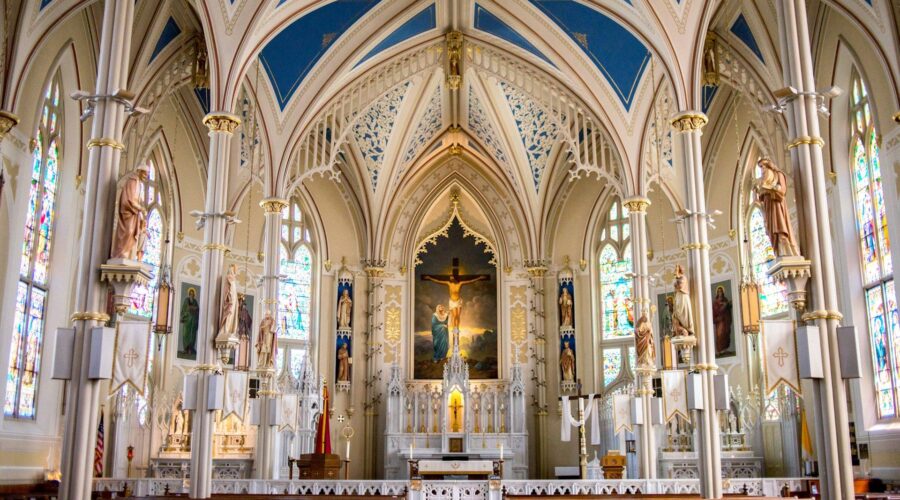Your cart is currently empty!
Discover the Holy Sepulchre: A Comprehensive Guide to Its History, Significance, and Architecture

Introduction
Nestled in the heart of Jerusalem’s Christian Quarter, the Church of the Holy Sepulchre stands as a sacred site of immense historical, theological, and architectural significance. Believed to mark the location of Jesus Christ’s crucifixion, burial, and resurrection, it is a site of pilgrimage and reverence for Christians around the world. This comprehensive guide delves into the rich history, profound symbolism, and intricate architecture of the Holy Sepulchre.
Historical Significance
Biblical Accounts and Early History
According to Christian tradition, the Holy Sepulchre marks the site of Jesus’ crucifixion at Golgotha, his entombment in a tomb, and his miraculous resurrection. The first recorded evidence of the site’s veneration dates back to the 4th century when Emperor Constantine the Great decreed the construction of a basilica over the tomb.
Constantine’s Basilica and Subsequent Developments
Constantine’s basilica, known as the Martyrium, was a grand structure that enclosed the tomb and the rock upon which it was believed Jesus was crucified. Over the centuries, the structure underwent numerous modifications and renovations, including additions such as the Dome of the Holy Sepulchre and the Chapel of St. Helena.
Theology and Symbolism
The Tomb and the Resurrection
The heart of the Holy Sepulchre is the Aedicule, a small shrine that houses the tomb of Jesus. It is revered as the place where Jesus’ body was interred and from where he rose from the dead on the third day. The resurrection of Jesus is central to Christian beliefs and is symbolized by the light that is annually emitted from the Aedicule during the Easter vigil.
The Cross and the Instruments of the Passion
Within the Holy Sepulchre are also enshrined the instruments of Jesus’ passion, including the crown of thorns and fragments of the true cross. These relics hold significant symbolic value, representing the suffering and sacrifice of Jesus for humankind’s salvation.
Architectural Features
The Rotunda and the Dome
The Rotunda, a grand circular structure, dominates the interior of the Holy Sepulchre. Above it stands the Dome of the Holy Sepulchre, a towering symbol of the basilica. Constructed by the Crusaders in the 12th century, the dome is an architectural marvel that adds to the awe and reverence of the site.
The Ambulatory and Chapels
Surrounding the Rotunda is an ambulatory or passageway that leads to various chapels and side altars. These chapels represent different Christian denominations and hold significance in their own right. Some notable chapels include the Chapel of St. Helena (traditionally believed to mark the burial site of Constantine’s mother), the Chapel of the Angels (honoring the appearance of an angel to the women at Jesus’ tomb), and the Chapel of the Syrophoenician Woman (remembering the Gospel account of Jesus’ encounter with a woman from Tyre).
Exterior and Landscaping
The exterior of the Holy Sepulchre is characterized by a series of medieval entrances, stone carvings, and courtyards. The courtyards provide access to the various entrances and offer visitors a glimpse into the history and architectural diversity of the site. The landscaping around the Holy Sepulchre includes olive trees and other greenery, symbolizing the gardens where Jesus is said to have spent his final hours.
Significance and Impact
Pilgrimage and Veneration
The Holy Sepulchre is a major destination for Christian pilgrims worldwide. Pilgrims come from far and wide to walk the Via Dolorosa (the path Jesus is believed to have taken to his crucifixion), pray in the chapels, and witness the annual Easter vigil. The site’s powerful spiritual and emotional resonance has drawn countless pilgrims throughout history.
Inter-Denominational Importance
The Holy Sepulchre is shared by several Christian denominations, including the Greek Orthodox Church, the Armenian Apostolic Church, the Roman Catholic Church, and the Coptic Orthodox Church. Each denomination has its own specific areas of the church and follows its own liturgical traditions. This shared custodianship reflects the site’s inter-denominational significance and the unity of Christian faith.
Cultural and Historical Heritage
Beyond its religious importance, the Holy Sepulchre is a treasure trove of cultural and historical heritage. Its architecture, art, and relics provide insights into the artistic and cultural expressions of different eras and civilizations. The site has been a subject of study for historians, scholars, and architects, contributing to our understanding of the evolution of Christian art and architecture.
Conclusion
The Church of the Holy Sepulchre is a multifaceted site of immense historical, theological, and architectural significance. Its association with Jesus Christ’s crucifixion, burial, and resurrection makes it a destination of profound spiritual importance for Christians worldwide. The intricate symbolism, diverse architectural features, and shared custodianship of the Holy Sepulchre reflect the richness and diversity of Christian faith. As a living testament to the events that shaped Christianity, the Holy Sepulchre continues to inspire awe, reverence, and pilgrimage for generations to come.